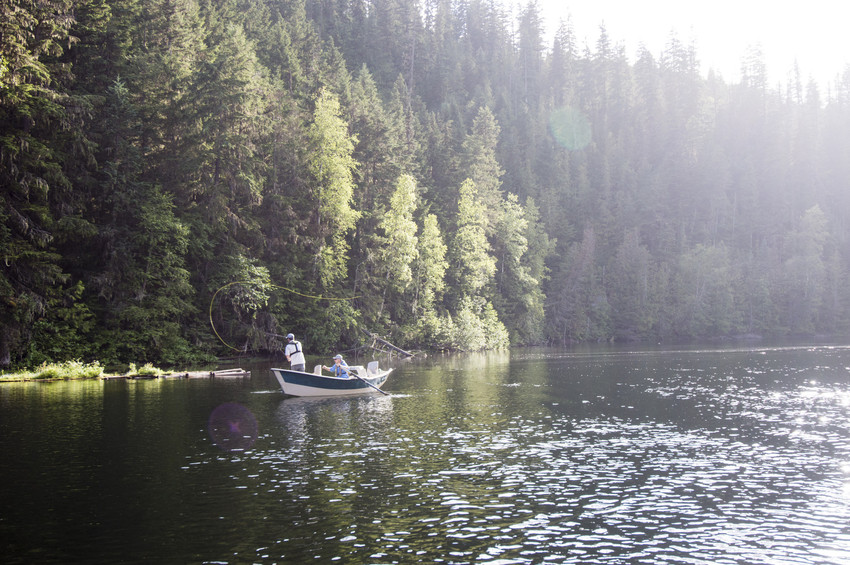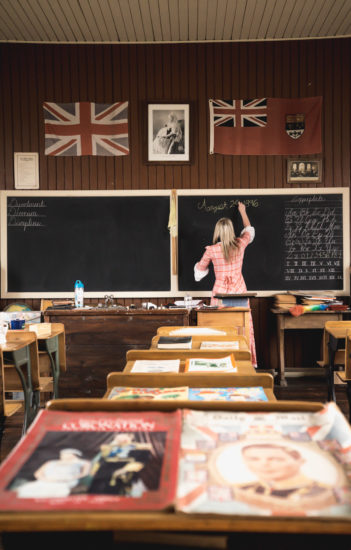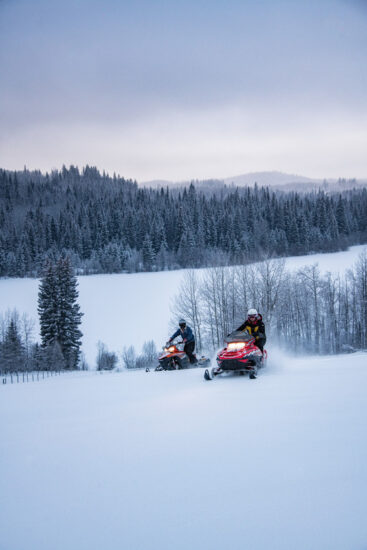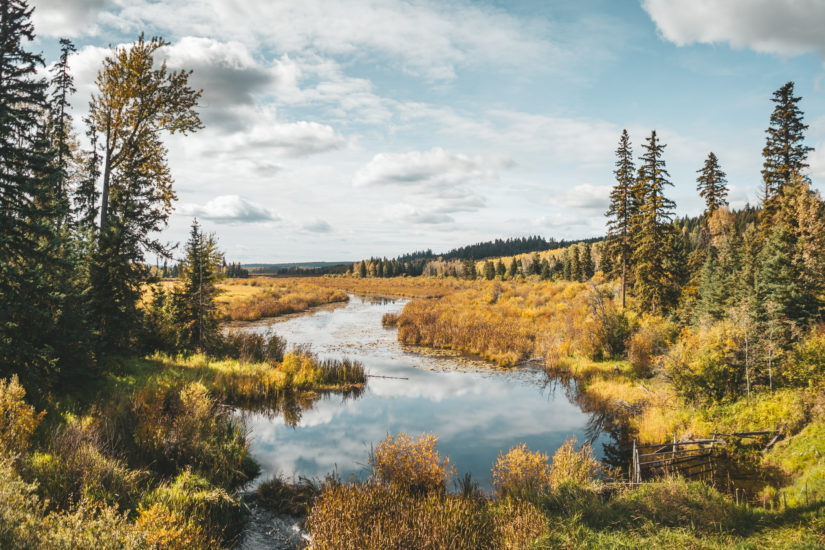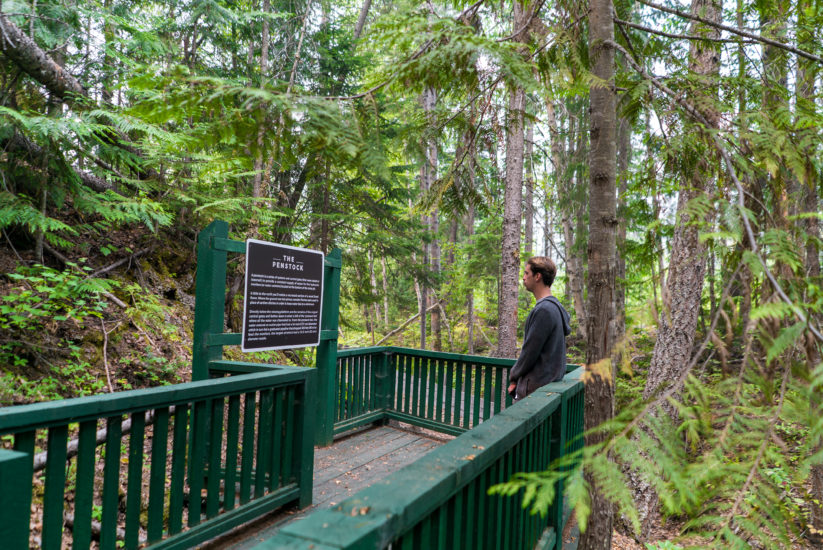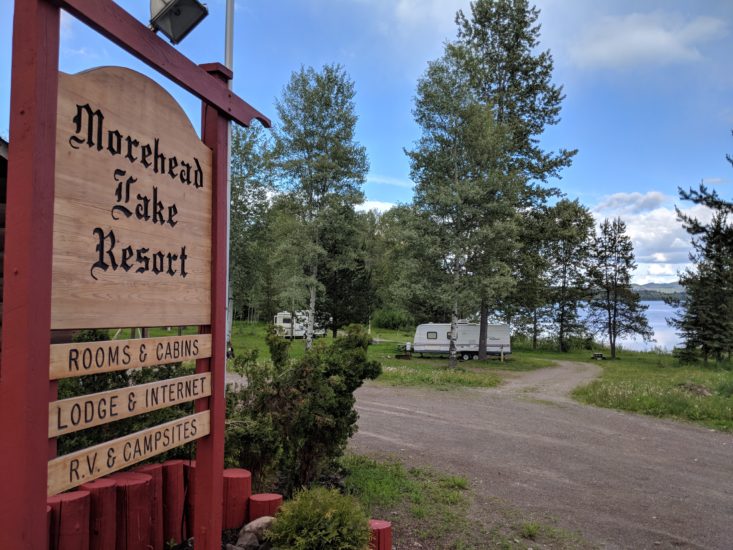Travel Info
- Distance
- ~ 86 km / 53 miles Likely Road
STOPS ON THIS LEG OF THE GOLD RUSH TRAIL
This area is the gateway to the Cariboo Mountains and Quesnel Lake
150 Mile House is a stop along the Gold Rush Trail that allows travellers to go one of two ways to Barkerville. Heading east along the back roads, the first gold discovered in the Cariboo Gold Rush was on the Horsefly River in 1859, three years before Billy Barker made his big strike on Williams Creek. Likely played a significant role in the Cariboo Gold Rush of 1859 when rough-edged boom towns like Quesnelle Forks, Cedar City, and Keithley Creek had overnight populations in the thousands. In 1860, Quesnelle Forks was a major supply centre for the Cariboo Gold Rush with the 100 residents catering to over 2,000 transient miners and adventurers. Just north of Likely, you can stop and visit the historic Buillon Pit Mine (1870s to 1942) which it one time it was one of the largest placer gold mines in the world.
Likely is the gateway to the Cariboo Mountains and is situated at the mouth of 100 km/62.1 mi long Quesnel Lake. The lake lays claim to being the deepest fjord lake in the world and the area surrounding it is a part of a rare inland temperate rainforest with towering cedars. On the road to Likely there are many points of interest, lakes, rivers and opportunities to explore. The surrounding area supports recreational activities such as snowmobiling, mountain biking, ATV trails, white water rafting, kayaking, and walking and hiking trails. The area is known for world-class fishing, hunting and outback camping. From Likely you can continue on and take the “Gold Rush Circle Route” which is the spectacular back road to Barkerville and Wells.
150 Mile House is a quiet ranchland community known for its gold rush, and pioneer history and log homes. The Cariboo Waggon Road was in fact scheduled to run through Williams Lake; however, a funding dispute resulted in a detour that went from 150 Mile House to Soda Creek. From 150 Mile House, travellers generally decide whether to continue north to Williams Lake or head northeast along the Gold Rush Trail to the resort lakes around Horsefly and Likely, or the “Backroad to Barkerville.” As you head to Likely from 150 Mile you will pass the 153 Mile Store located on the 153 Mile Ranch, built by Italian settler Louis Crosina in 1914 and now owned by the Patenaude family. The 153 Mile House (not open to the public) is where a century-old log building still stands that once supplied food and goods to prospectors heading to the Cariboo goldfields.
- Visit the Little Red Schoolhouse, the oldest functional school building in the Cariboo Chilcotin. Constructed in 1896 beside the original Cariboo Waggon Road when 150 Mile House was a commercial hub, the wood-frame, one-room building is now a historical site and classroom open to the public in summer.
- There are several guest ranches found nearby, with horseback riding a popular summer pastime and snowmobiling and snowshoeing in winter.
- Turn off to take the road less travelled through ranchlands to the Cariboo Mountains to the source of the Cariboo Gold Rush. If you are adventurous, travel the scenic back road to Barkerville Historic Town & Park and the historic town of Wells BC.
- 150 Mile House is a great stopping point to stock up on supplies and get trusted local advice as you embark on all of your adventures in Horsefly, Likely, the Cariboo Mountains and Quesnel Lake area.
- 150 Mile House also offers great fishing at Dugan and Dewar Lake, as well as many other lakes close by. Dugan Lake is a great place to spend your day, or even stay overnight at the maintained campground and the same can be said for the smaller campground at Dewar Lake.
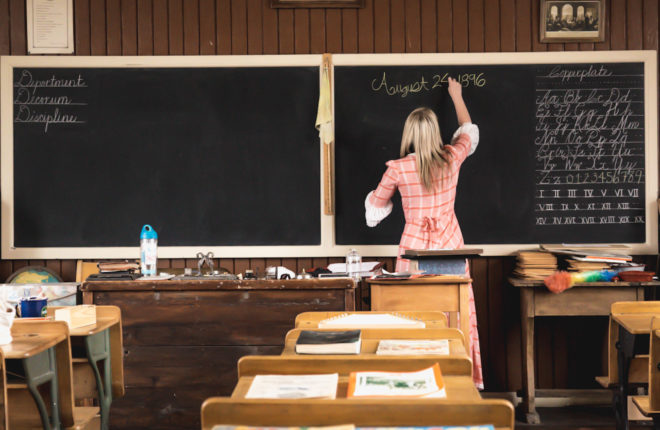
Stop at Big Lake Ranch, located on the shores of Big Lake, and follow in the footsteps of miners from around the world that searched for gold in the Cariboo. This was once a major stop for miners and some buildings from the ranch are still standing (private property). Today the Community Hall is a popular gathering place that houses the town’s post office, fire and rescue department, district library, and gym.
- Make your way along the 500 m Big Lake Community Hall Low Mobility Trail, a packed gravel surface that loops from the Community Hall through the forest along the lakeshore and back.
- There are two public lake access roads that can be found on the north side of the lake and even though there are no resorts on Big Lake, there is camping space and a boat launch located on the north side of the lake. Besides fishing, Big Lake is an excellent swimming and waterskiing lake.
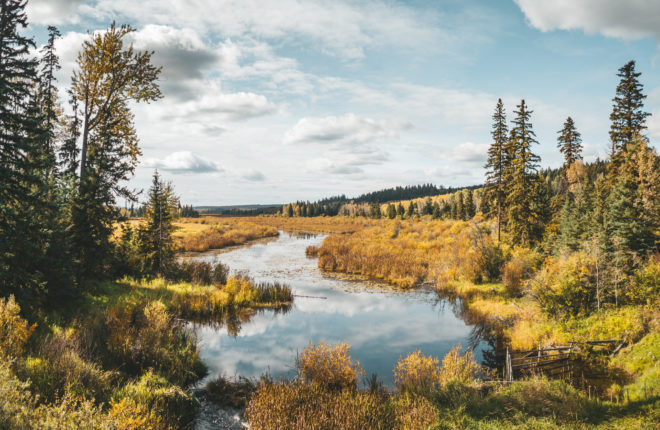
Morehead Lake was created in the 1890s as one of the water supplies for the Bullion Pit Mine. According to some sources, the name “Morehead” came from the mining term “more head”, others say it came from a miner by the name of William Morehead, who lived near the mouth of Morehead Creek (the creek was named after him). Today, Morehead Lake is a scenic place to unwind and enjoy the outdoors.
- Morehead Lake is a very scenic lake that is great for fishing. The rainbows vary from pan size to about 35cm in length and the hill in the background is Polley Mountain.
- If taking it easy and getting in touch with nature is on your agenda, Morehead Lake is the place for you. Just sit outside the cabins or your campsite of Morehead Lake Resort and relax, taking in the scenery and tranquility.
- You might see a bald eagle or osprey soar above and dive down into the lake to catch a fish, a blue heron glide over the water, listen to a grouse flapping its wings or the intriguing call of a loon. The abundant wildlife in the area includes black bear, moose, deer, coyote, lynx, beaver, loon, bald eagle, osprey, blue heron, hummingbird and more.
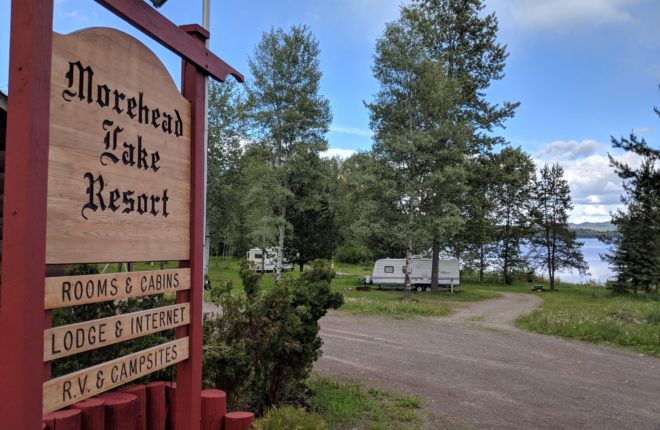
Likely is located on the original Gold Rush Trail at the west end of Quesnel Lake, the deepest fjord-lake in North America. This area played a significant role in the Cariboo Gold Rush of 1859 when rough-edged boom towns like Quesnelle Forks, Cedar City, and Keithley Creek had overnight populations in the thousands. Today Likely is the gateway to the stunning Cariboo Mountains, Quesnel Lake and B.C.’s inland rain forest with distinct flora and fauna unique to the area. The area surrounding the lake is known for grizzly and black bears, moose, mountain caribou, mountain goats, wolves and wolverines. More than 250 species of birds have been noted in this region in the foothills of the Cariboo Mountains. Likely is the perfect place to get off the beaten path and experience year-round adventure: fishing, kayaking, wilderness camping, mountain biking, whitewater kayaking, hiking, snowmobiling, snowshoeing and guided eco-tours, including bear and wildlife viewing.
- Visit Quesnel Lake, east of Likely, BC, which is considered the world’s deepest fjord lake and the deepest lake in BC with a maximum depth of 511m. Due to the remote location, Quesnel lake offers the ability to fish right from shore and along tributary streams, or to explore the lake by boat, kayak, canoe, or paddleboard during the summer months.
- While in the area, be sure to visit the Historic Bullion Pit and Quesnelle Forks to learn more about gold rush history in the area.
- Cedar Point Provincial Park is a scenic park nestled in a tall stand of ancient cedar trees next to Quesnel Lake. The park offers a boat launch, day use and camping. In the 1850s, Cedar Point Park was a rendezvous point for the Hudson’s Bay Company fur brigade. The Cedar City Museum located in the park offers maps and information on day trips and attractions of the area from peak season June to September.
- Book a fly fishing trip at the historic Northern Lights Lodge. This unique BC fly fishing lodge offers unforgettable guided fly fishing on four pristine wilderness rivers in the Cariboo Mountains.
- The best place to see grizzlies is by the river. Ecotours-BC is situated on the sublime Quesnel River, a go-to bear habitat in the summer and fall during the salmon runs. The Pyna-tee-ah Lodge is home base for daily explorations with well-known guides including the “Bear Whisperer.” Guides follow the bears throughout the seasons and their knowledge of the bear’s ecology and local wildlife is immense.
- Likely is also is a great leaping off point to explore the “Gold Rush Circle Route” also known as the backroad to Barkerville Historic Town & Park. You will travel through historic areas of the original Gold Rush Trail along the foothills of the Cariboo Mountains. Be sure to stock up on all your supplies and check road conditions in Likely before you embark on your backcountry adventures.

